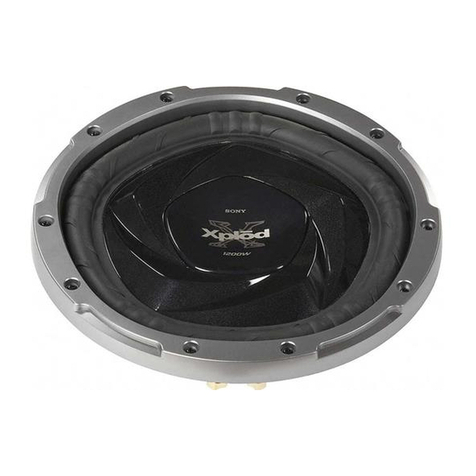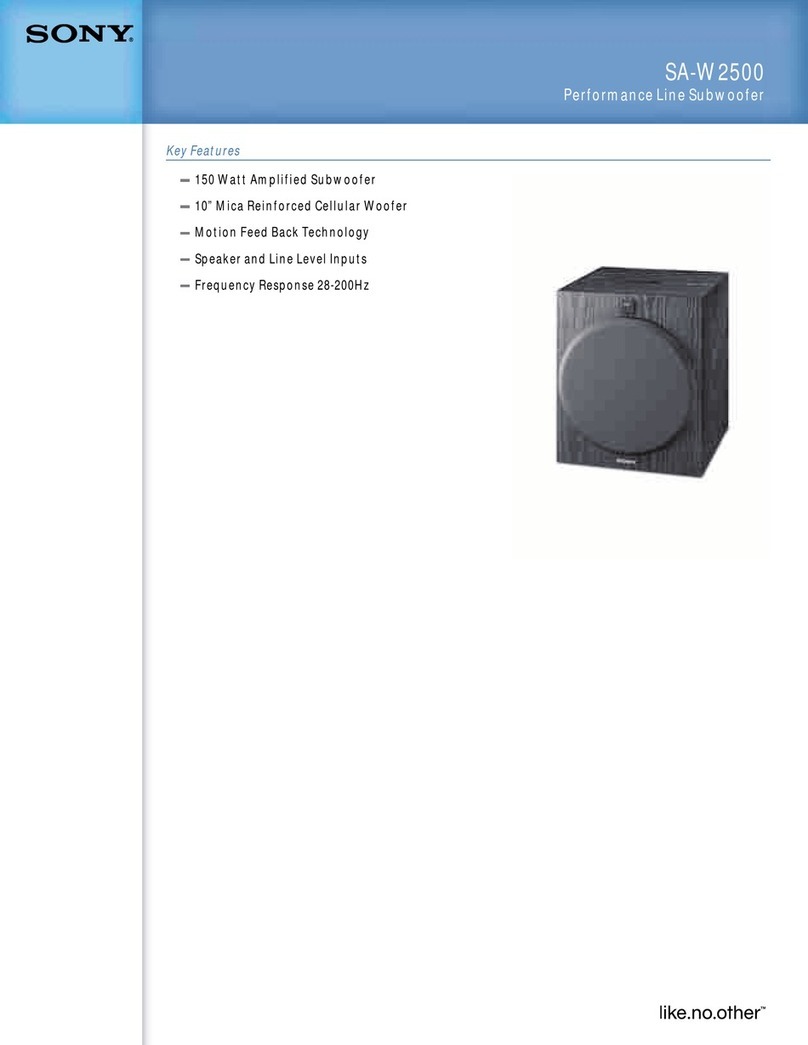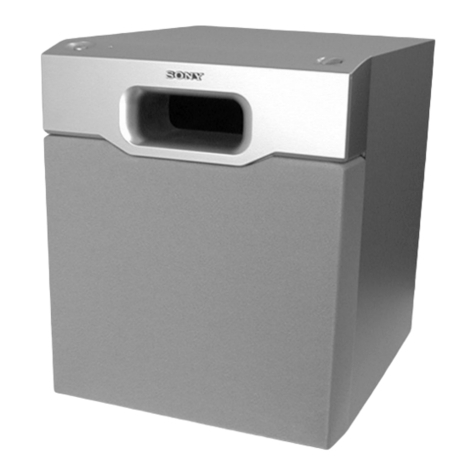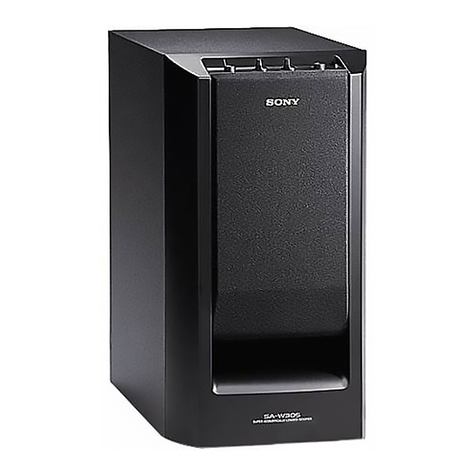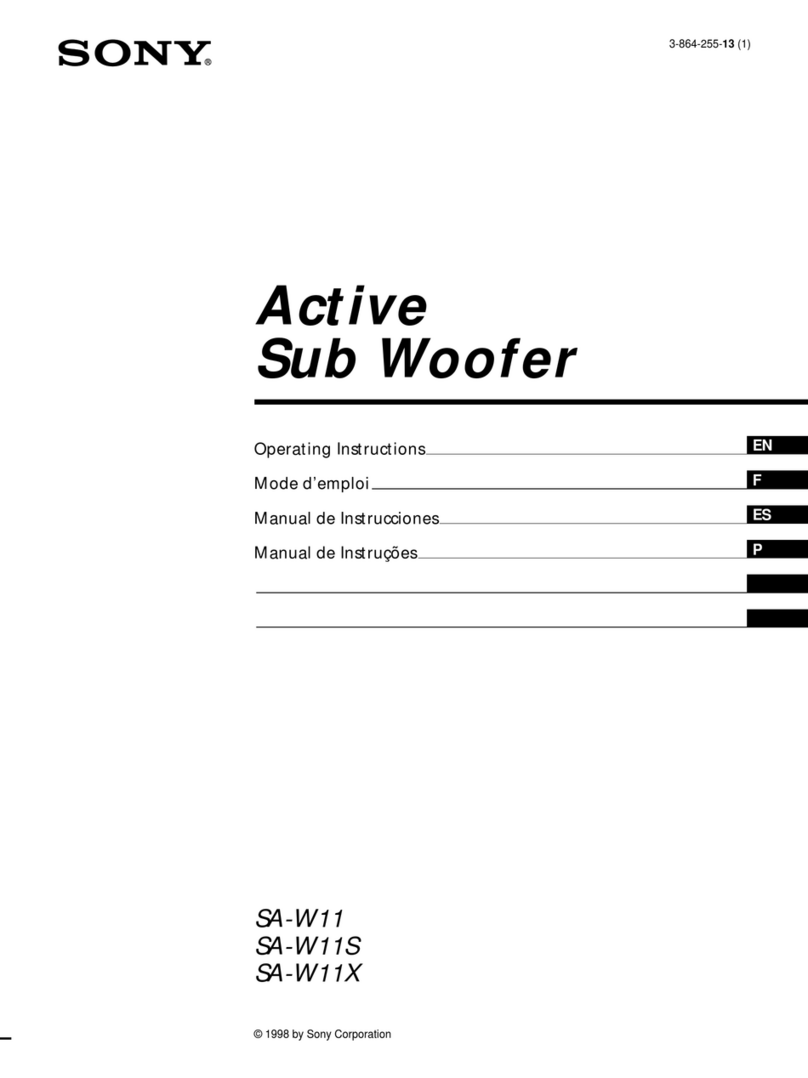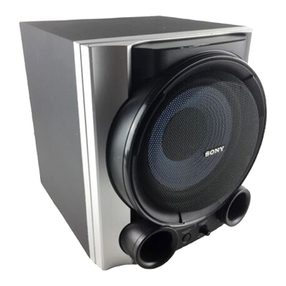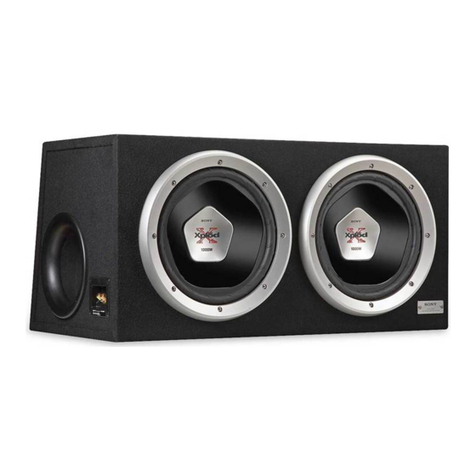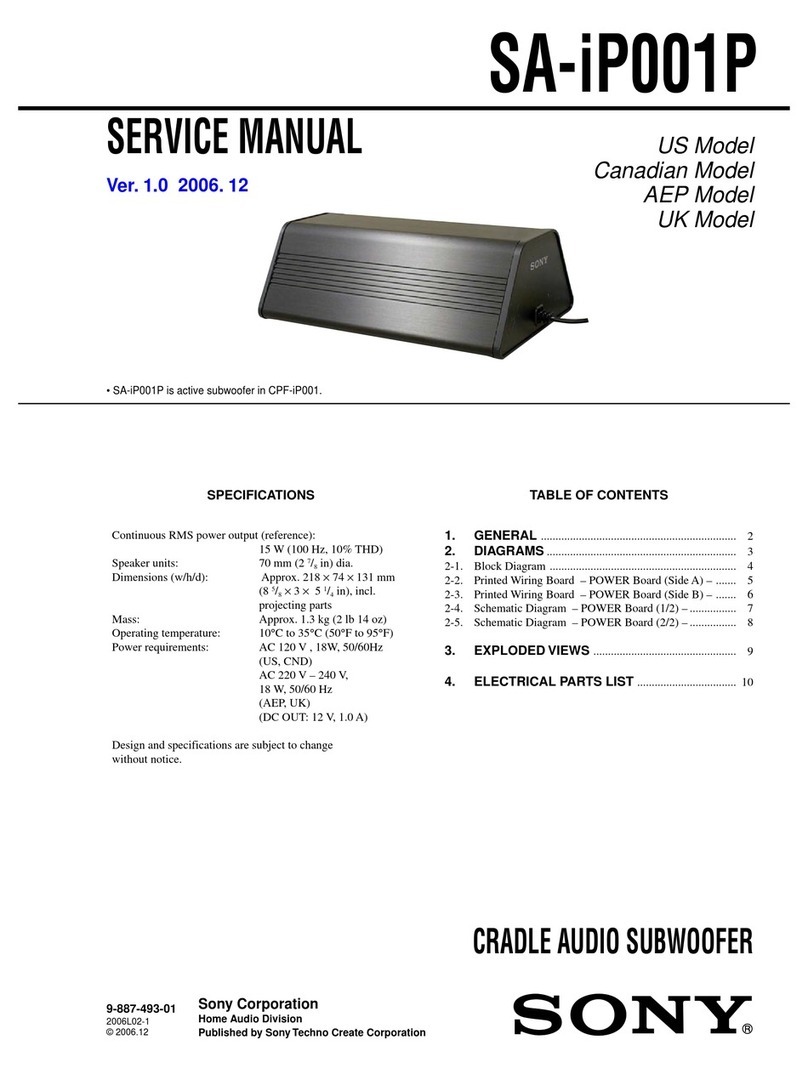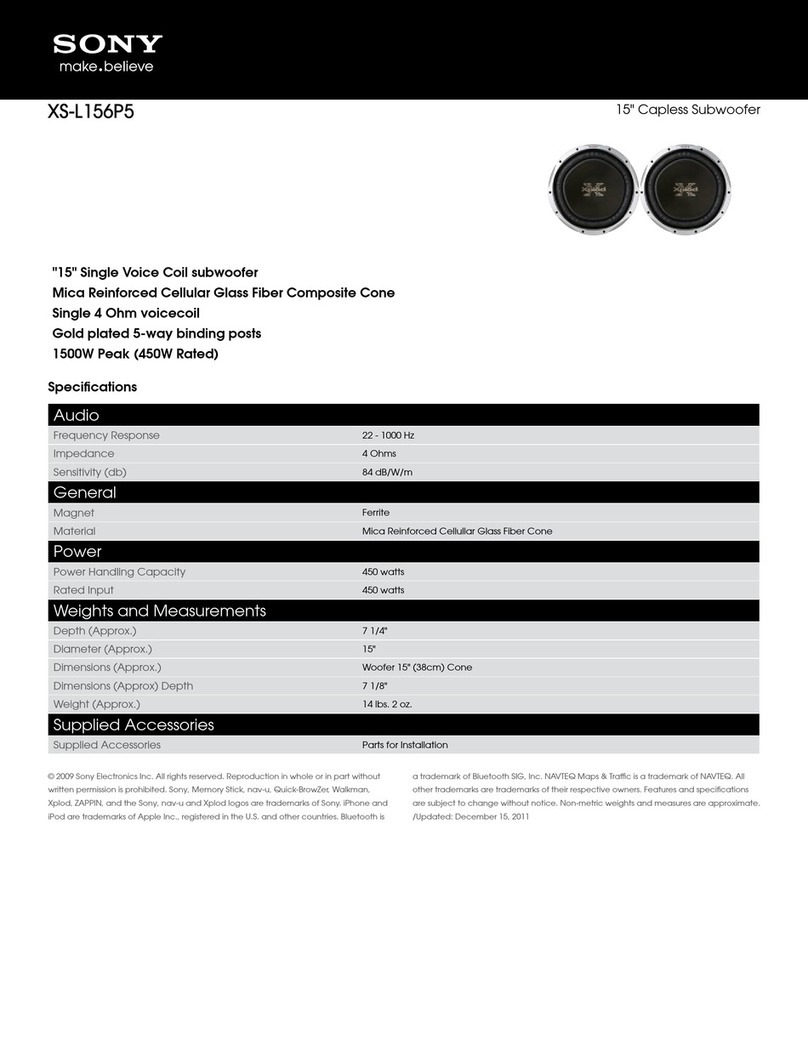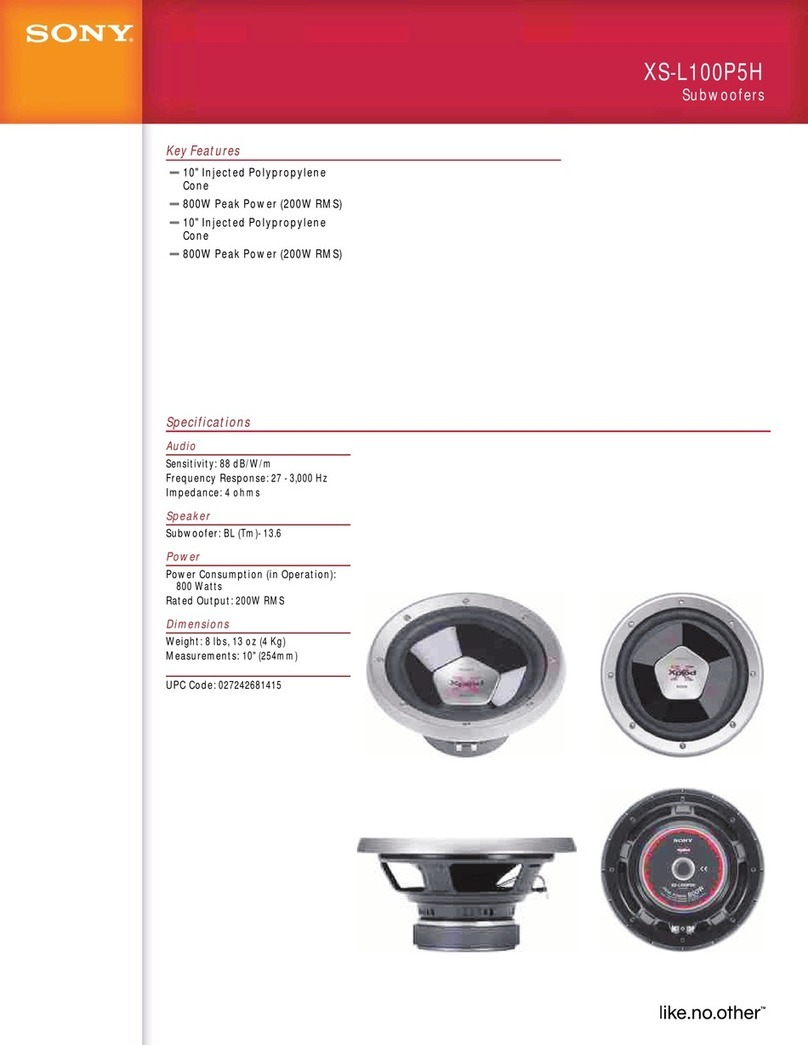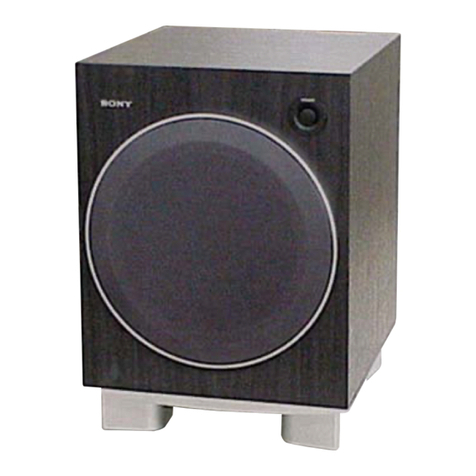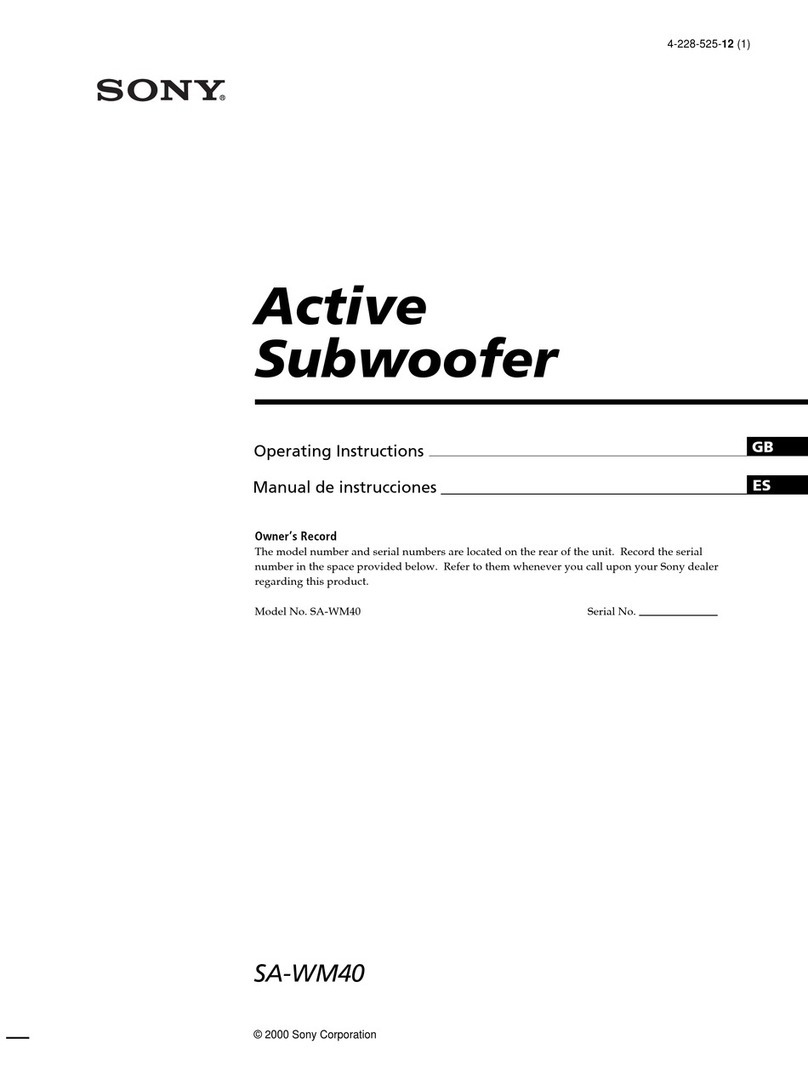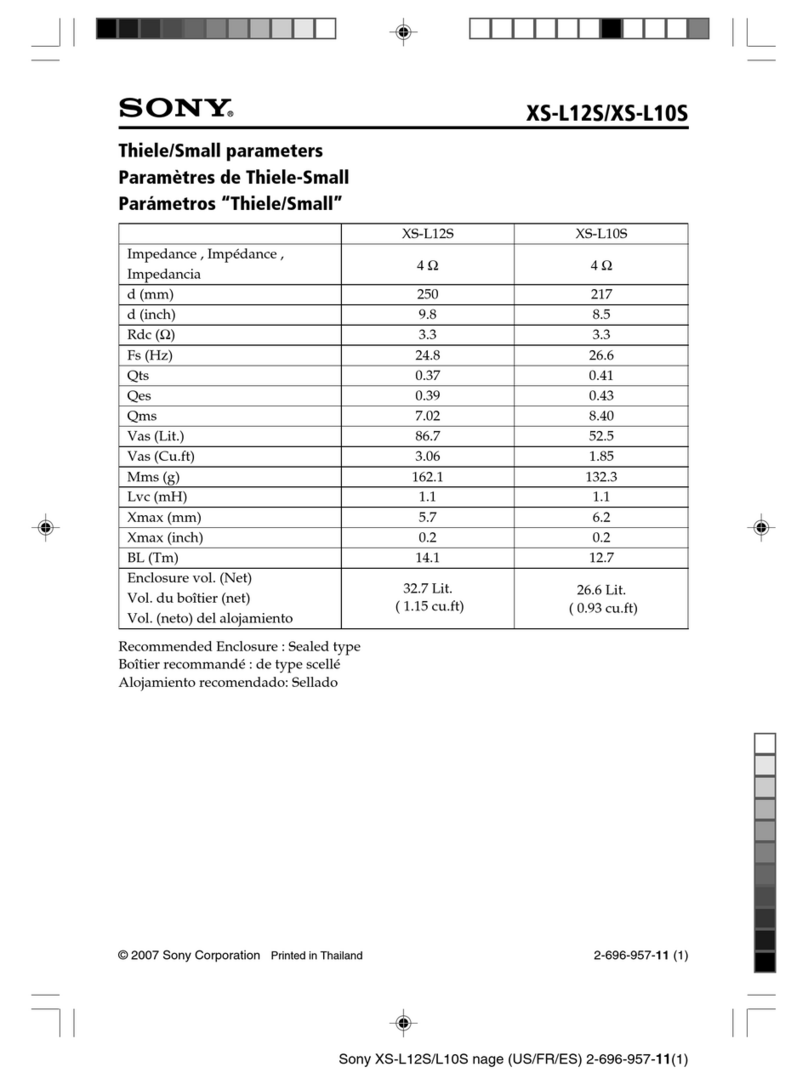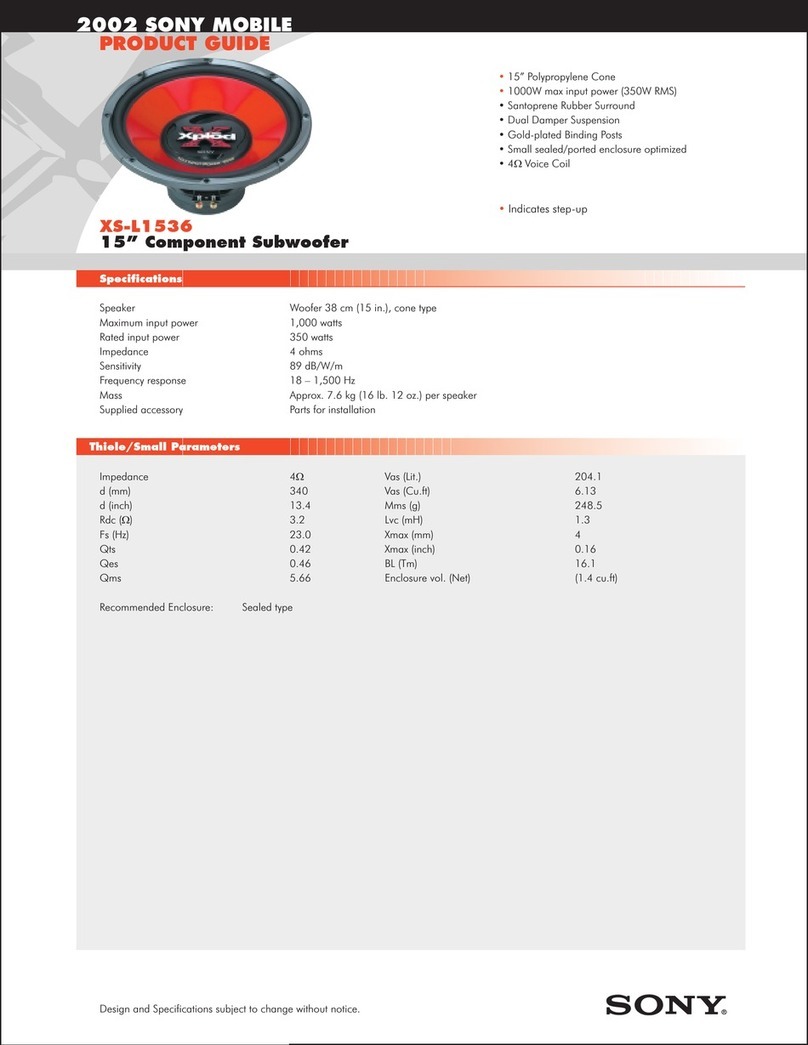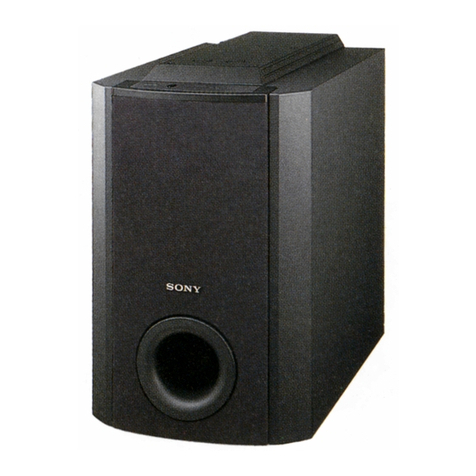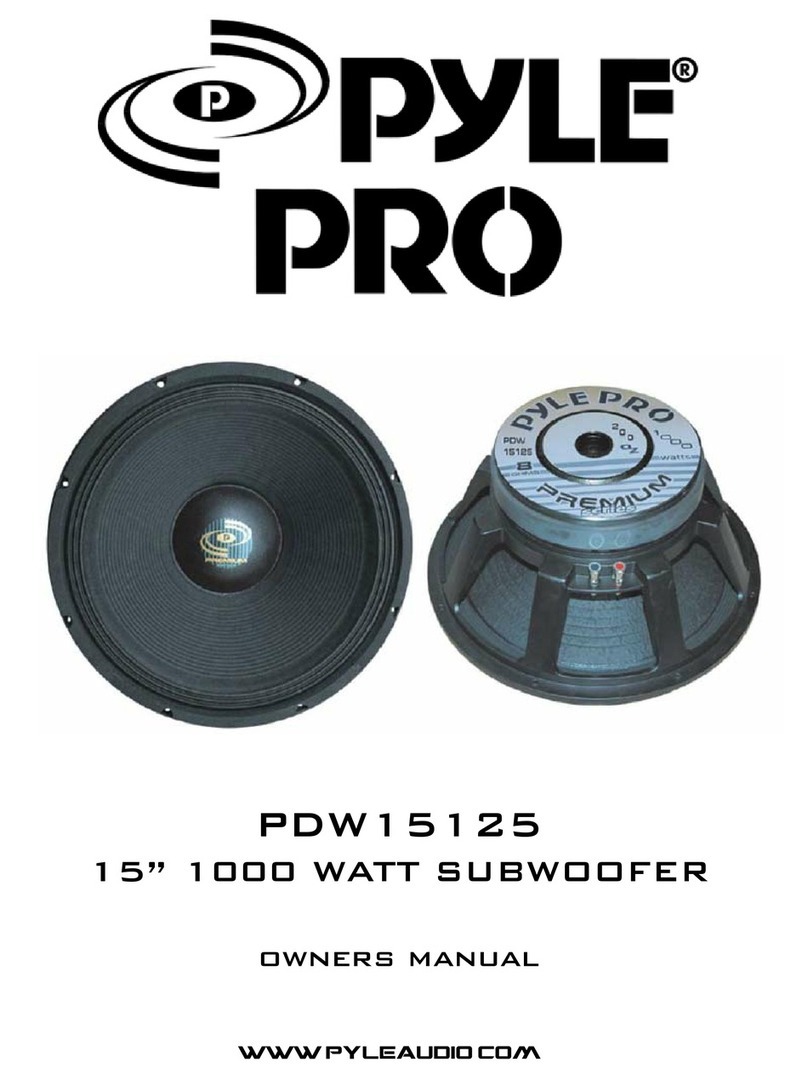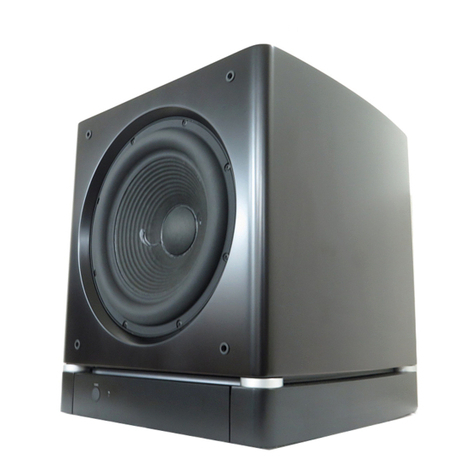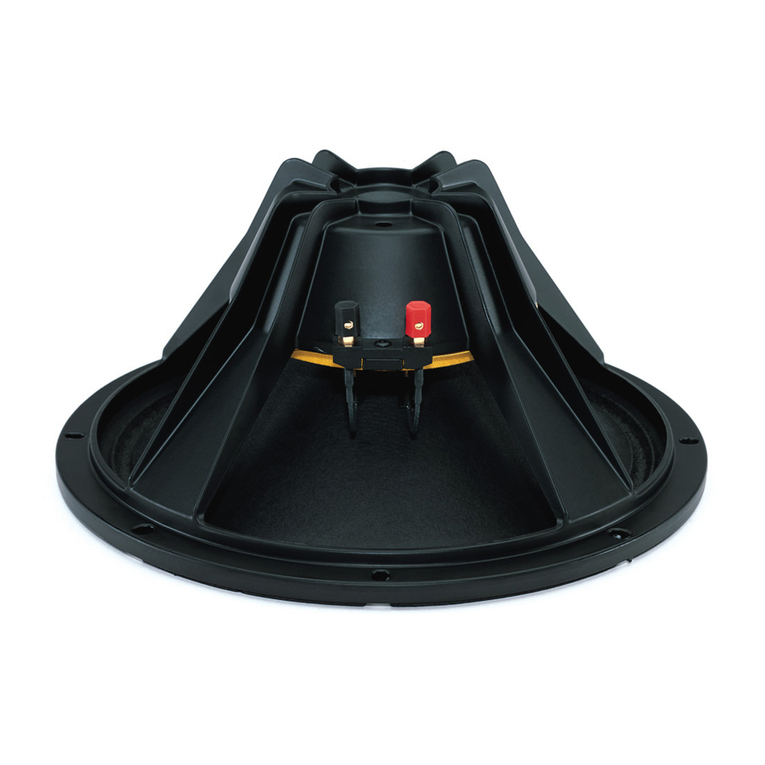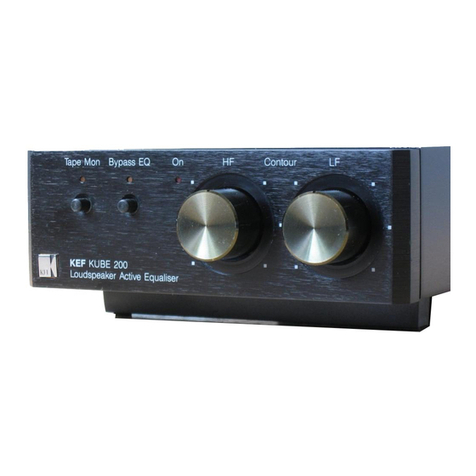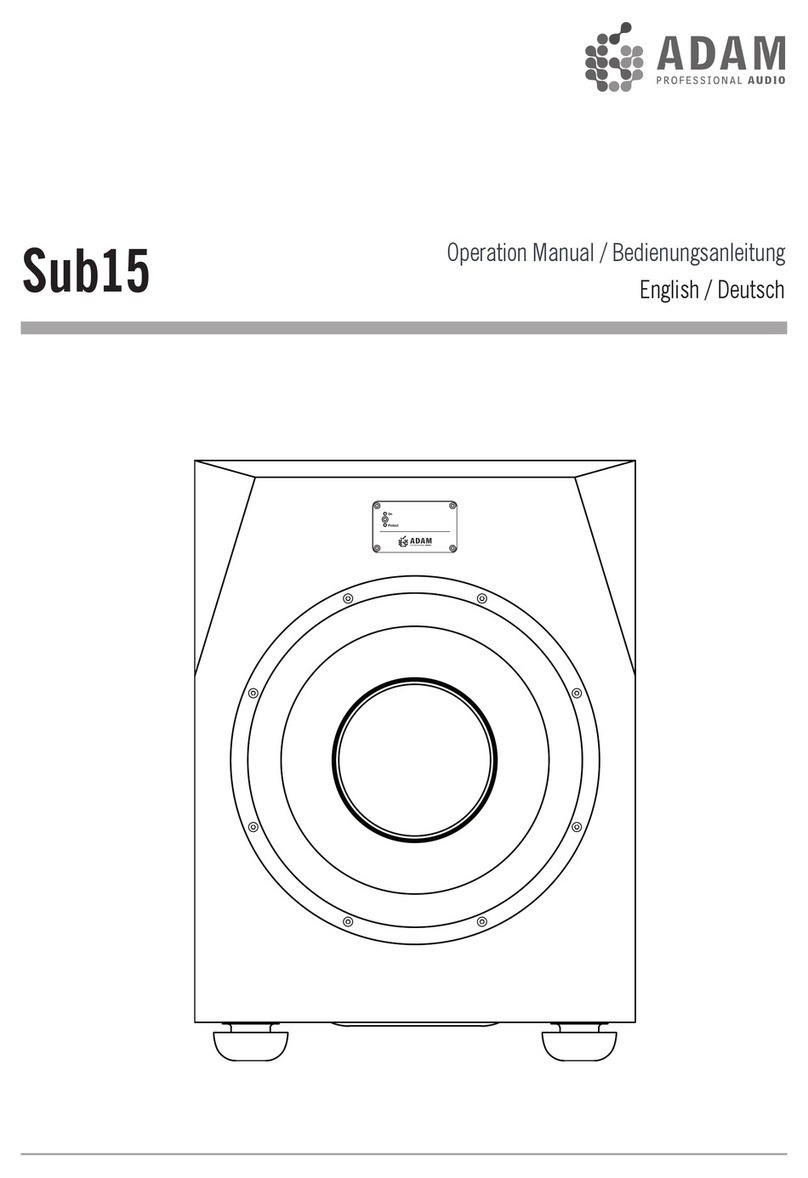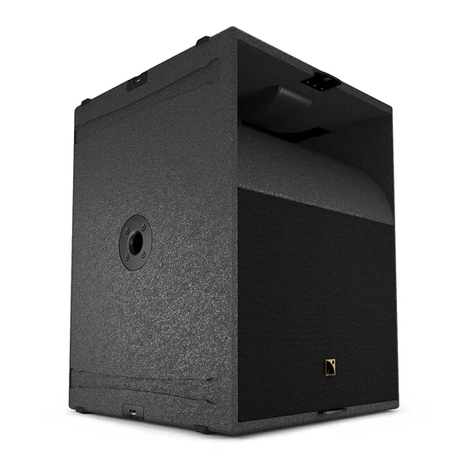
2EN
WARNING
To prevent fire or shock
hazard, do not expose
the unit to rain or
moisture.
Do not install the appliance in a
confined space, such as a bookcase or
built-in cabinet.
For the customers in the
U.S.A.
This symbol is intended to alert the user
to the presence of uninsulated
“dangerous voltage” within the
product’s enclosure that may be of
sufficient magnitude to constitute a risk
of electric shock to persons.
This symbol is intended to alert the user
to the presence of important operating
and maintenance (servicing) instructions
in the literature accompanying the
appliance.
Owner’s Record
The model number and serial numbers
are located at the rear. Record these
numbers in the spaces provided below.
Refer to these numbers whenever you
call upon your Sony dealer regarding
this product.
Model No. SA-W70ES/SA-W705/
SA-W505
Serial No.
CAUTION
You are cautioned that any changes or
modifications not expressly approved in
this manual could void your authority
to operate this equipment.
CAUTION
Use of this appliance with some systems
may present a shock or fire hazard. Do
not use with any units which have the
following marking located near output.
WARNING: HAZARDOUS ENERGY!
Note to CATV system installer:
This reminder is provided to call CATV
system installer’s attention to Article
820-40 of the NEC that provides
guidelines for proper grounding and, in
particular, specifies that the cable
ground shall be connected to the
grounding system of the building, as
close to the point of cable entry as
practical.
For detailed safety precautions, see the
leaflet “IMPORTANT SAFEGUARDS”
included with this manual in the vinly
bag.
For the customers in Canada
CAUTION
TO PREVENT ELECTRIC SHOCK, DO
NOT USE THIS POLARIZED AC PLUG
WITH AN EXTENSION CORD,
RECEPTACLE OR OTHER OUTLET
UNLESS THE BLADES CAN BE FULLY
INSERTED TO PREVENT BLAD
EXPOSURE.
NOTICE FOR THE CUSTOMERS
IN THE UNITED KINGDOM
A moulded plug complying with BS
1363 is fitted to this equipment for your
safety and convenience.
Should the fuse in the plug supplied
need to be replaced a 5 AMP fuse
approved by ASTA or BSI to BS 1362,
(i.e. marked with 2or @mark) must be
used.
If the plug supplied with this equipment
has a detachable fuse cover, be sure to
attach the fuse cover after you change
the fuse. Never use the plug without the
fuse cover. If you should lose the fuse
cover, please contact your nearest Sony
service station.
IMPORTANT
If the plug supplied is not suitable for
the socket outlets in your home, it
should be cut off and an appropriate
plug fitted in accordance with the
following instructions.
The wires in this mains lead are
coloured in accordance with the
following code:
Blue: Neutral
Brown: Live
As the colours of the wires in the
mains lead of this apparatus may
not correspond with the coloured
markings identifying the terminals
in your plug, proceed as follows:
The wire which is coloured blue
must be connected to the terminal
which is marked with the letter N or
coloured black. The wire which is
coloured brown must be connected
to the terminal which is marked
with the letter L or coloured red. Do
not connect either wire to the earth
terminal in the plug which is
marked by the letter E or by the
safety earth symbol Yor coloured
green or green-and-yellow.
WARNING
To prevent shock hazard, do no insert
the plug cut off from the mains lead into
a socket outlet. This plug cannot be used
and should be destroyed.
